Programmatic advertising offers scale and efficiency, but it also comes with challenges—rising CPMs, data fragmentation, and the increasing complexity of audience targeting. Marketers need a platform that provides transparency, advanced data integrations, and AI-driven optimizations to maximize performance across channels.
This guide provides an in-depth look at The Trade Desk capabilities and how to leverage its features for precise targeting, real-time optimizations, and improved ROI. From bid strategies to data activation, we’ll cover best practices to ensure every dollar spent delivers measurable impact.
What Does The Trade Desk Do?
Core Features of The Trade Desk
The Trade Desk stands out from other DSPs with its open ecosystem and enterprise-level features. Unlike walled gardens that limit data access and inventory, TTD offers full transparency in bidding, costs, and performance.
Key advantages include its independent identity solution (UID 2.0), AI-driven optimization (Koa™), custom algorithm capabilities, and seamless cross-channel targeting. Let’s take a closer look at each of these features.
1. Platform essentials
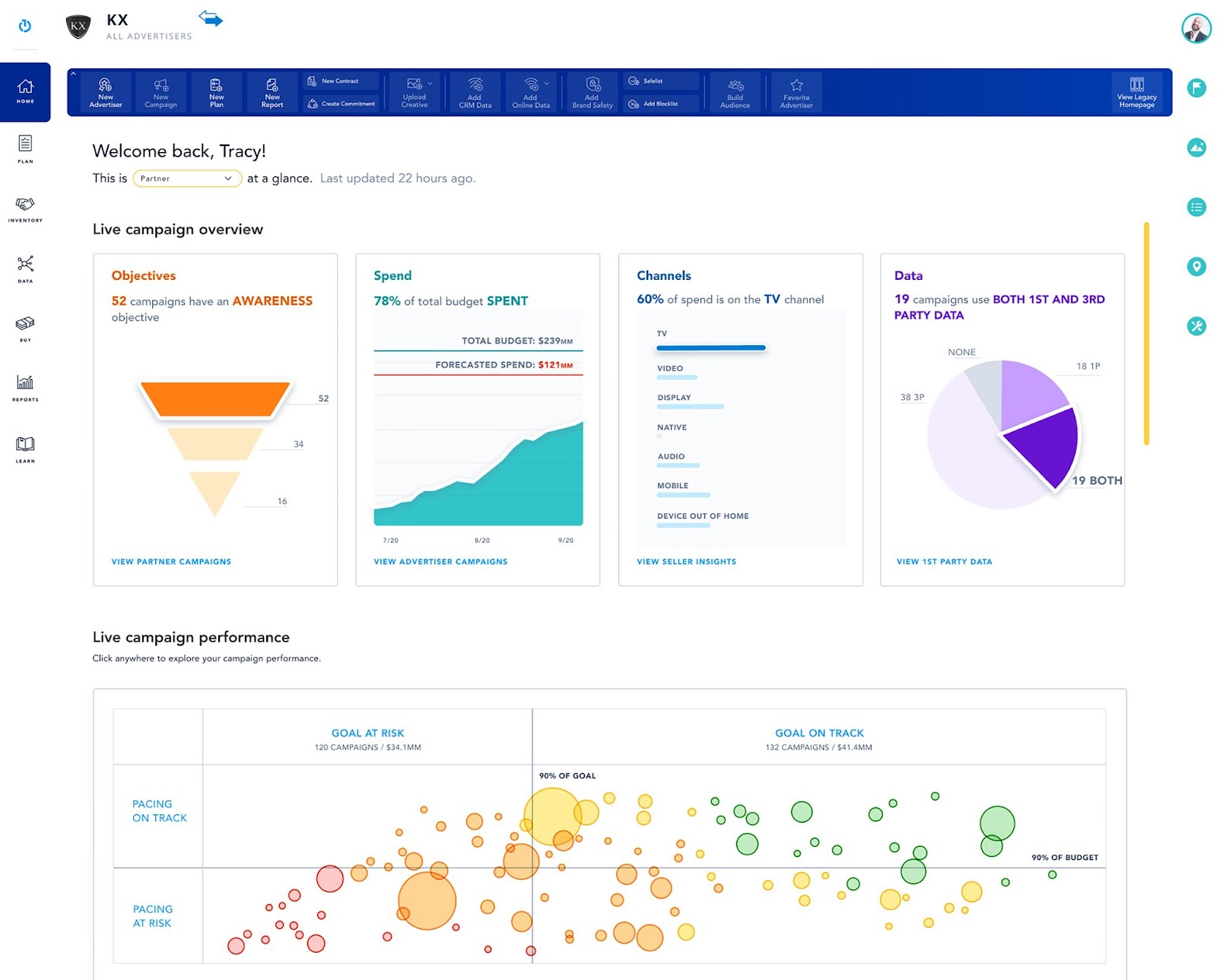
- User interface basics: The Trade Desk's dashboard seamlessly balances simplicity with depth. Visual graphics, trend lines, and performance metrics are intuitively arranged, while advanced settings are conveniently grouped for power users.
- Campaign setup and management: A step-by-step walkthrough simplifies the campaign creation process. It allows customization of ad formats, bidding strategies, and budget allocation, alongside a forecast tool to predict potential reach and impressions.
- Customization and optimization control: TTD offers deep customization for advertisers who require precise control over campaign execution. Users can adjust pacing, frequency caps, and optimization goals, as well as set up automated bid adjustments based on real-time performance data. Custom algorithms allow further fine-tuning, ensuring campaigns align with specific business objectives.
2. Targeting capabilities
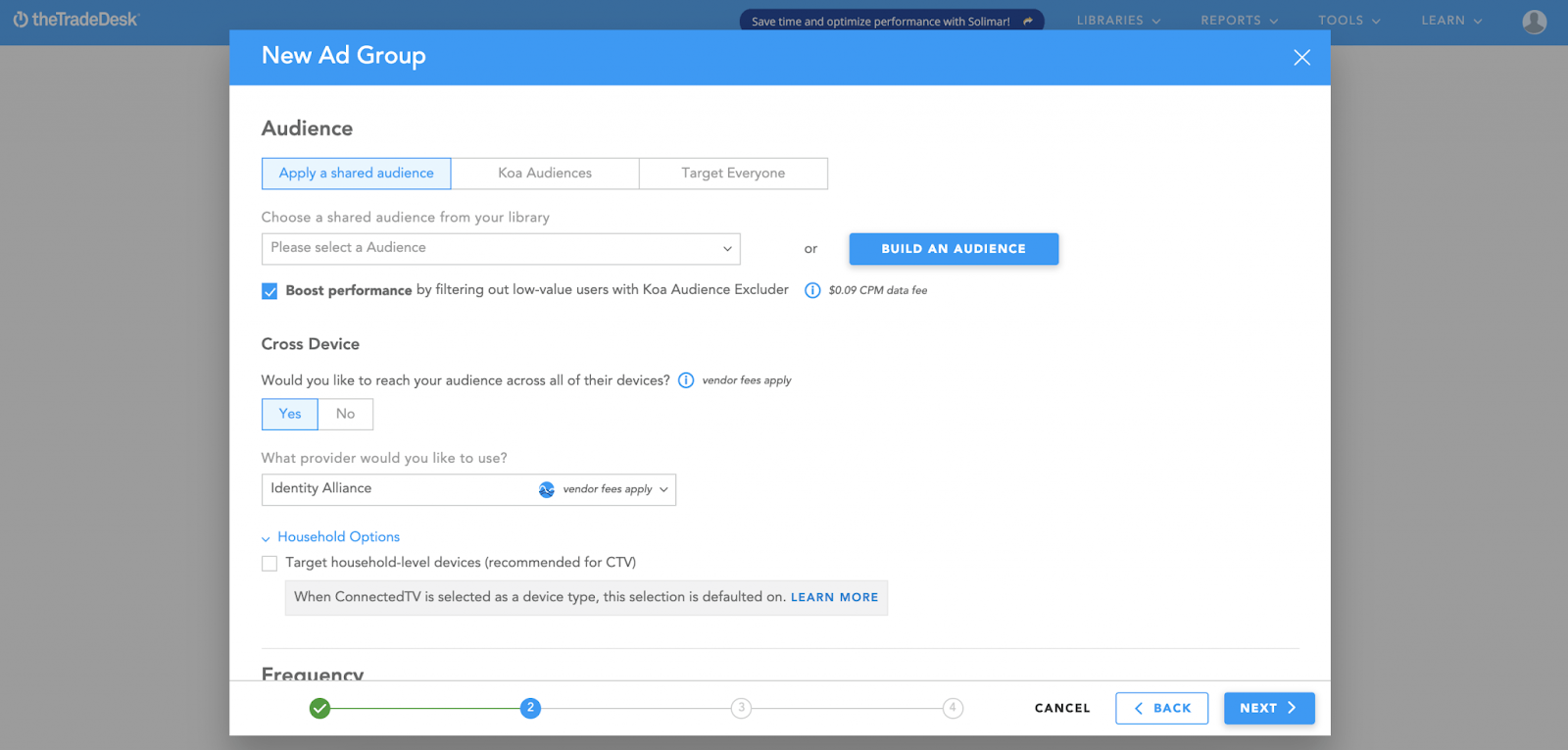
TTD offers one of the most advanced targeting suites in digital media. By leveraging both first-party data and third-party audience insights, advertisers can refine their media buying strategies and reach high-intent audiences across multiple channels
- Audience targeting: Marketers can segment their audience based on demographics, interests, behaviors, and purchase intent. Advertisers can layer in first-party data from CRMs or customer interactions and combine it with The Trade Desk’s third-party data marketplace to ensure ads are presented to the most relevant audience segments.
- Lookalike audience: TTD uses AI-driven modeling to analyze existing customer data and build lookalike audiences. This helps brands expand reach by targeting users who share similar behaviors and characteristics with their best-performing customers.
- Contextual and environmental targeting: The Trade Desk evaluates web content for keyword relevance, ensuring ads resonate with the content they accompany. Additionally, environmental factors like device type, connection speed, or even weather can be factored in.
- Geotargeting capabilities: Beyond basic geographic targeting, the platform allows radius targeting around specific coordinates and even combines demographic data with geolocation for precision advertising.
- Cross-device targeting: This capability allows for delivering personalized messaging across a user's journey on different devices. It is aimed at ensuring a consistent and relevant interaction with audiences irrespective of the device they are using.
- Retail and commerce data targeting: Through partnerships with retail media networks, The Trade Desk provides access to transaction-based targeting, allowing brands to reach shoppers based on real purchase data from major retailers.
- Private Marketplace (PMP) and programmatic guaranteed deals: The Trade Desk supports Private Marketplace (PMP) deals, where advertisers can bid on exclusive, high-quality inventory from publishers. Programmatic Guaranteed (PG) deals allow for direct media buying at pre-negotiated rates, ensuring brand safety and control over ad placements.
3. Cross-channel advertising
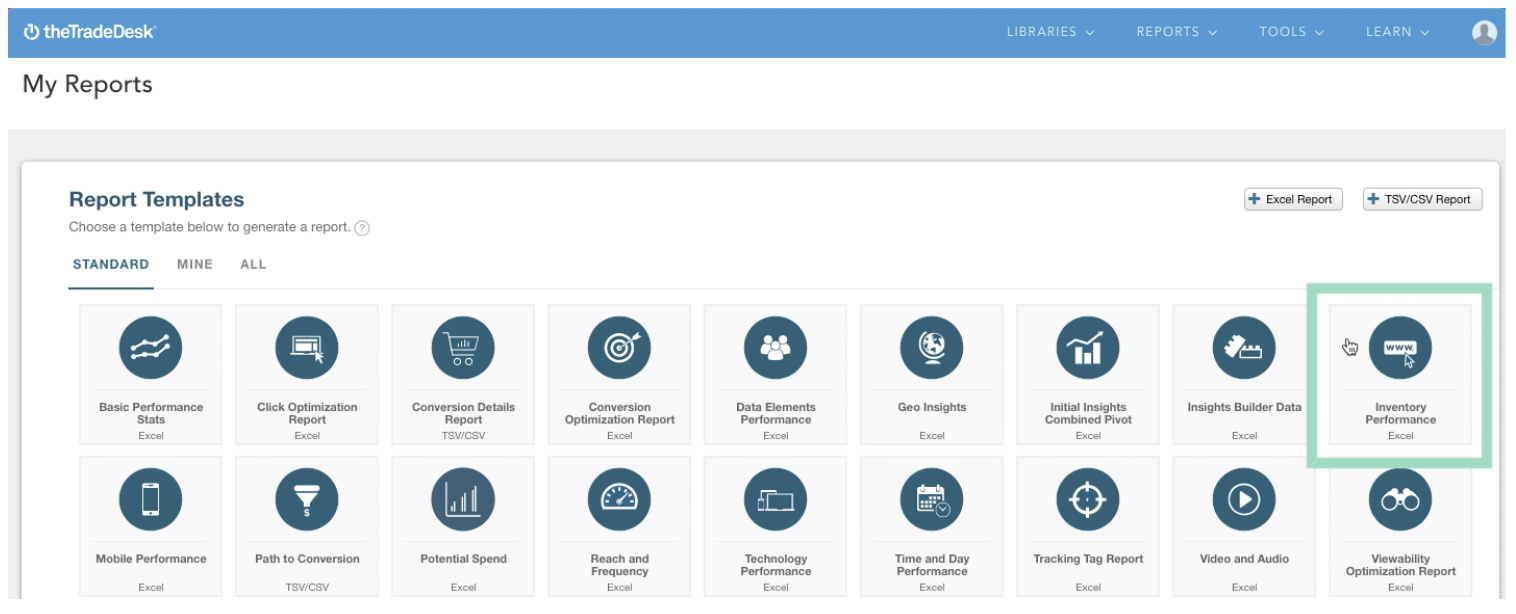
- Omnichannel reach: TTD provides access to inventory across multiple digital media channels, including display, video, native, connected TV (CTV), digital audio, and digital out-of-home (DOOH). This allows advertisers to execute truly cross-channel media buying strategies from a single platform, ensuring consistent brand messaging and audience engagement across all touchpoints.
- Unified reporting: The platform consolidates performance metrics from multiple channels, helping marketers measure campaign impact holistically rather than in silos. Cross-channel attribution models help determine the effectiveness of each touchpoint in the customer journey, improving budget allocation and ROAS.
- Automated budget optimization across channels: Through artificial intelligence decision-making (Koa™), The Trade Desk dynamically reallocates budgets across channels in real time based on performance signals. If one channel outperforms another, spending is shifted automatically to maximize conversions and efficiency.
- Lookback windows and multi-touch attribution: The Trade Desk supports customizable attribution windows, allowing advertisers to track delayed conversions across channels.
4. Real-Time Bidding (RTB)
- Auction-based media buying: The Trade Desk operates on a real-time bidding (RTB) model, allowing advertisers to bid on individual impressions in milliseconds. Each bid is placed programmatically based on predefined audience targeting criteria, ad relevance, and bid strategy.
- Fraud prevention and brand safety: To protect ad spend, TTD integrates pre-bid fraud detection tools, such as ads.txt enforcement, Supply Chain Object (SPO), and partnerships with verification providers like IAS and DoubleVerify. This minimizes invalid traffic (IVT), ensuring brands pay only for viewable, high-quality impressions.
- Custom algorithmic bidding: For brands seeking deeper control over their bidding strategy, The Trade Desk offers custom bidding algorithms. This allows advertisers to incorporate proprietary data signals into their bid logic—factoring in customer lifetime value (CLV), seasonal trends, or proprietary intent signals to prioritize high-value impressions.
5. Data management and integration
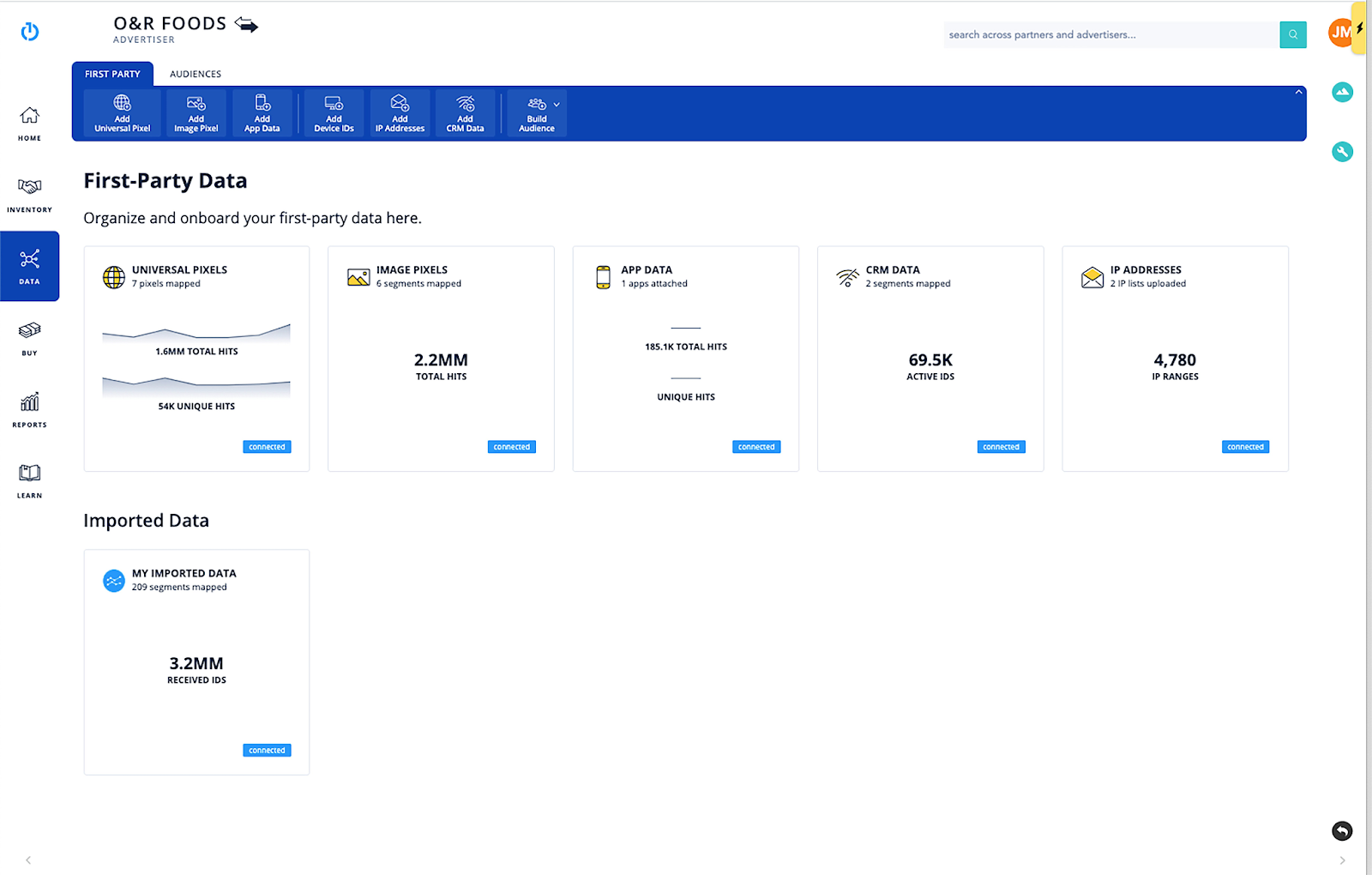
- Data integration: The platform allows advertisers to ingest first-party data from CRM systems, web analytics, and offline sources, enhancing audience segmentation and targeting precision. By integrating customer transaction history, loyalty program data, and offline conversions, marketers can build custom audiences with deeper intent signals.
- Integration with data management platforms (DMPs): For enterprises leveraging DMPs, The Trade Desk provides direct integrations with leading ad tech solutions. Marketers can sync audience segments in real time.
- Supply-side platform (SSP) integration: TTD connects directly with leading SSPs. Its Supply Chain Object (SPO) partnerships help remove unnecessary middlemen, making ad buying more cost-efficient and transparent.
Unified ID 2.0: The Next Evolution
In response to evolving cookie policies and more strict privacy expectations, The Trade Desk introduced Unified ID 2.0, marking a pivotal change in the handling and utilization of online identities. Let's delve into what it is.
Moreover, by offering a transparent opt-in process for users, it establishes trust and paves the way for more meaningful, personalized ad experiences. For marketers, this means achieving efficient ad delivery, improved measurement, and optimized return on investment in a world that's steadily moving away from cookies.
Trade Desk vs. Google Ads: A Comparative Analysis
Both The Trade Desk and Google Ads are prominent players in the digital advertising landscape, but they cater to different needs and have distinct features.
Here's a comprehensive comparison to help you understand their unique offerings and how they stack up against each other.
| Feature | The Trade Desk | Google Ads |
|---|---|---|
| Platform type | Independent demand-side platform for programmatic media buying | Ad network and platform for buying Google-owned and partner inventory |
| Inventory access | Access to multiple ad exchanges and premium publishers across open web | Primarily Google-owned properties (Search, YouTube, Display Network, etc.) |
| Ad formats | Supports display, video (CTV/OTT), audio, native, and DOOH (digital out-of-home) | Supports search ads, display, YouTube video, discovery, performance max, and shopping ads |
| Targeting | Advanced audience segmentation using first-party, third-party, and contextual targeting. Includes behavioral, demographic, device-based, and predictive AI-driven targeting. | Primarily first-party data targeting (Google Audiences), keyword targeting, in-market segments, and automated audience expansion |
| Cross-channel ads | Enables unified campaigns across display, video, audio, native, and CTV with consolidated reporting | Limited to Google’s ecosystem (Google Search, YouTube, and Google Display Network) with some cross-channel tracking via GA4 |
| Real-time bidding (RTB) | AI-driven RTB optimization across multiple supply-side platforms (SSPs) | Google's proprietary bidding system optimized for its own inventory |
| Data management | Integrates with multiple data management platforms, customer data platforms (CDPs), and third-party data providers | Limited external integrations; primarily uses Google’s own data ecosystem |
| First-party data | Uses UID 2.0 and other independent identity solutions for cookieless targeting and tracking | Relies on Google’s first-party data and Privacy Sandbox for post-cookie solutions |
| AI and automation | Leverages AI-driven optimization via Koa™ to improve bidding, targeting, and ad placements | Uses Smart Bidding and machine learning models to automate bid strategies and campaign performance |
| Pricing Model | Uses a CPM-based bidding model with control over fees and data costs | Uses CPC, CPM, and CPA models; Google sets auction prices, and advertiser control is limited |
| Best for | Advertisers and agencies looking for independent, data-driven programmatic buying across multiple channels | Brands and businesses focused on Google Search, YouTube, and Google Display Network advertising |
The Trade Desk Platform Best Practices
The Trade Desk offers powerful tools, but success depends on how well you use them. Here are some best practices that will help you get the most out of your programmatic campaigns.
- Leverage first-party data: Connect CRM data, customer purchase history, and website engagement metrics to build high-value audience segments. The Trade Desk supports LiveRamp, Merkle, and other identity resolution partners to enhance match rates.
- Use bid factors in Kokai: Assign higher bid factors to high-value impressions, such as specific websites or mobile apps your audience prefers, and lower bid factors to underperforming regions or inventory to guide Kokai's AI to align with your strategy. This approach helps prioritize high-value impressions and improves overall campaign efficiency.
- Disable auto-allocator for non-guaranteed campaigns: For non-guaranteed campaigns, manually allocate budgets at the ad group level to maintain greater control over spend distribution. This prevents overspending on underperforming ad groups while allowing you to prioritize high-performing ones.
- Sequential messaging and storytelling: Set up frequency caps and exposure sequencing to ensure consumers see ads in the right order—introducing a brand first before presenting a conversion-focused message.
- Break out exchanges into separate Ad Groups: To optimize delivery, create individual ad groups for your top-performing exchanges. This allows you to prioritize spend on high-performing inventory while maintaining scale across remaining exchanges
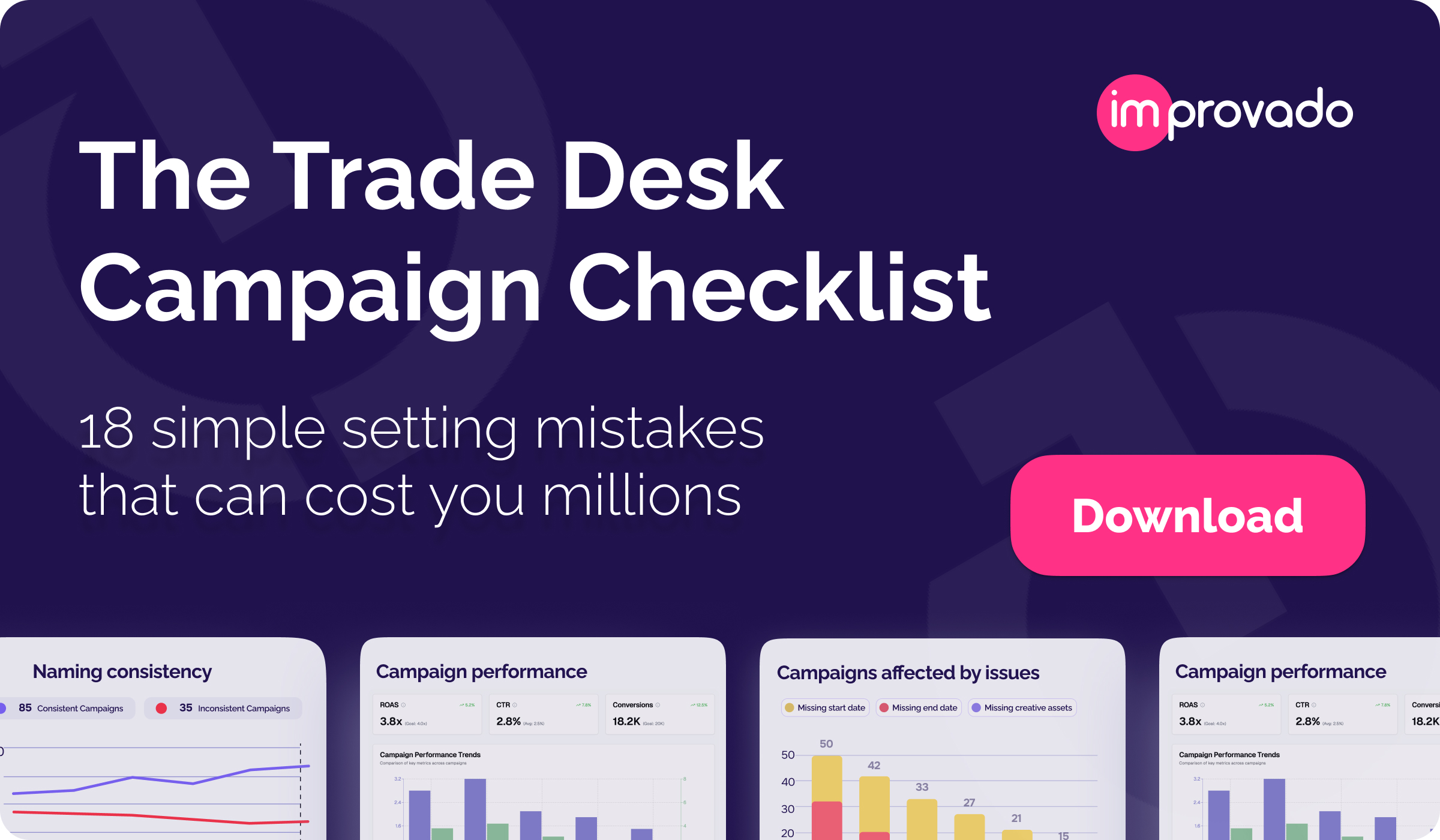
The Trade Desk Analytics
While TTD reporting tools are robust and can drive informed decision-making, solely relying on in-tool analytics can come with certain limitations.
One major challenge is fragmented cross-channel data that makes it hard to get a complete view of conversion paths. TTD delivers insights within its own ecosystem, but integrating performance data from other ad platforms, web analytics tools, and CRM systems requires external solutions.
Another limitation is the lack of custom metrics and advanced reporting. The Trade Desk offers pre-defined reporting structures, and deeper performance analysis often requires additional tools to create custom calculations, compare data across platforms, or build more granular reports tailored to business needs.
Finally, measuring true ROI remains a challenge. Many marketers find it difficult to directly connect TTD ad spend with revenue outcomes, particularly when dealing with multi-touch attribution, offline conversions, or lifetime value analysis.
To address these challenges, marketers need a centralized data solution that consolidates The Trade Desk performance data alongside other ad platforms, CRM insights, and web analytics.
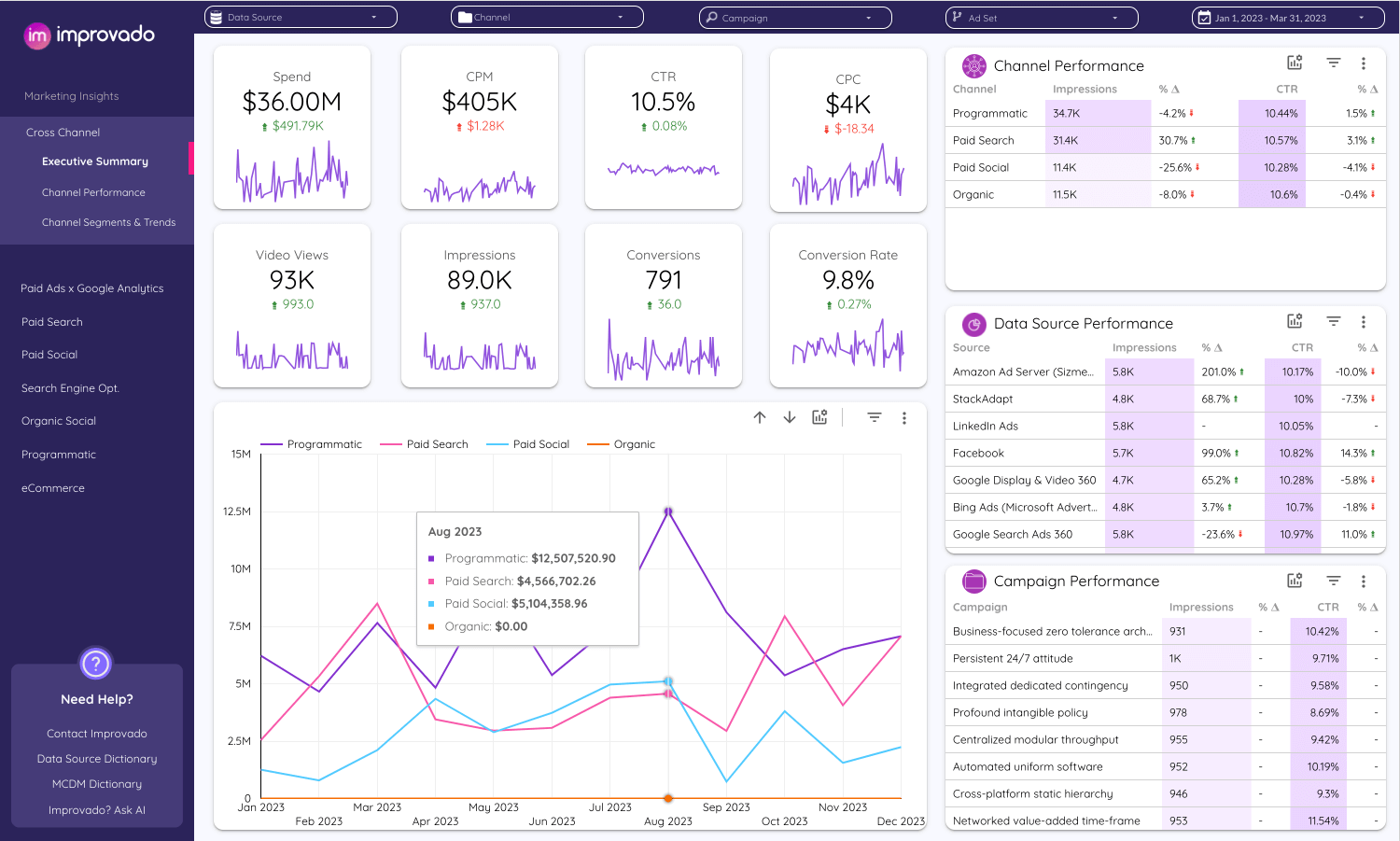
Improvado is a marketing analytics and intelligence platform. It automates data aggregation and transformation, pulling insights from The Trade Desk and 500+ other marketing and sales sources into a unified analytics environment. This eliminates cross-channel fragmentation, allowing marketers to measure impact across the entire customer journey.
Improvado offers advanced algorithms, AI capabilities, and data analysis features to process and interpret data at a much granular level. The solution provides customer profiling capabilities, marketing attribution modeling, comprehensive marketing spend and ROI analysis, a metric pacing solution, and more.
The Professional Services team can further customize the platform to cater to your specific business requirements and data needs. Get a demo with Improvado to maximize your TTD advertising results.
.png)
.jpeg)
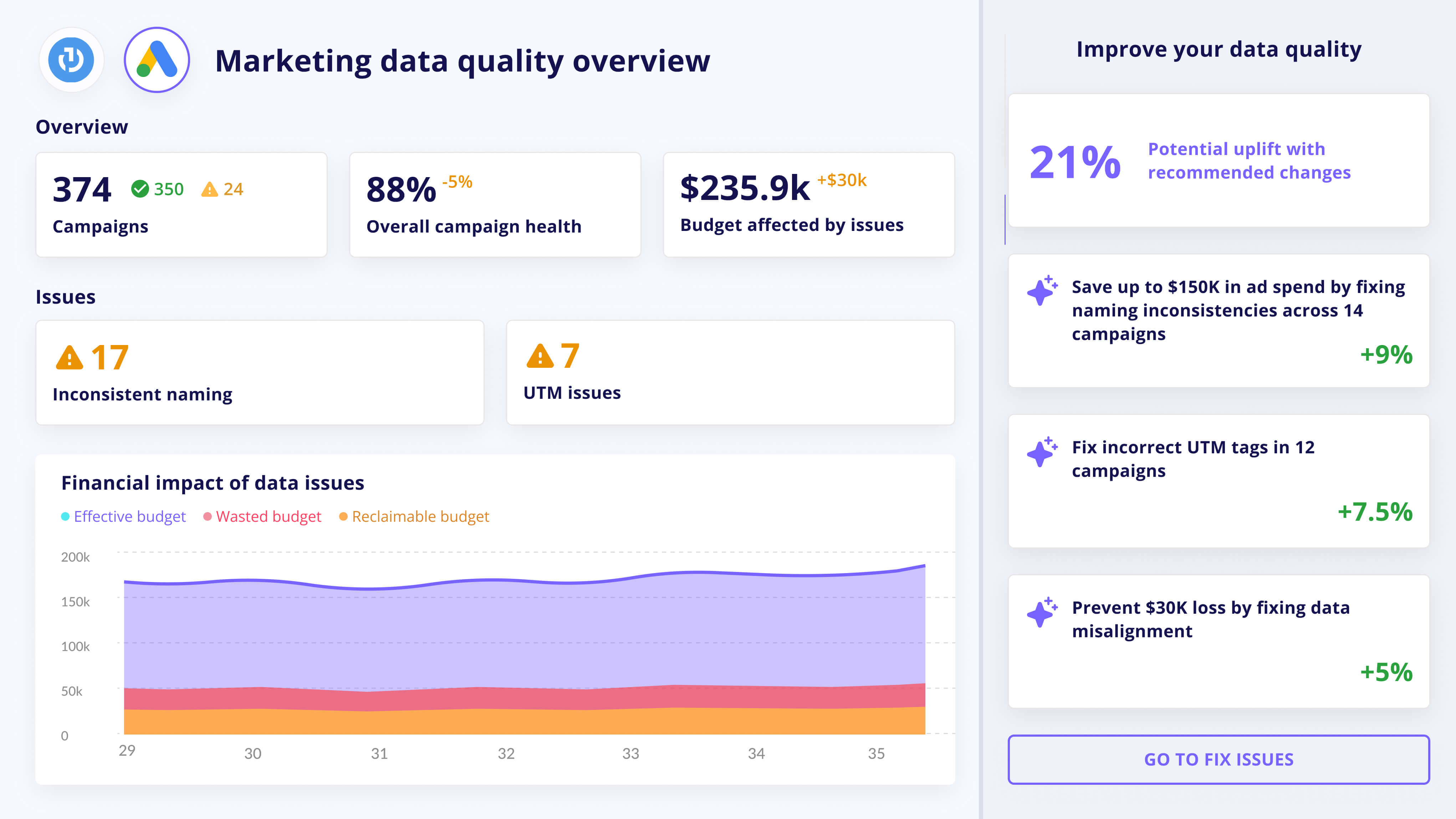




.png)
